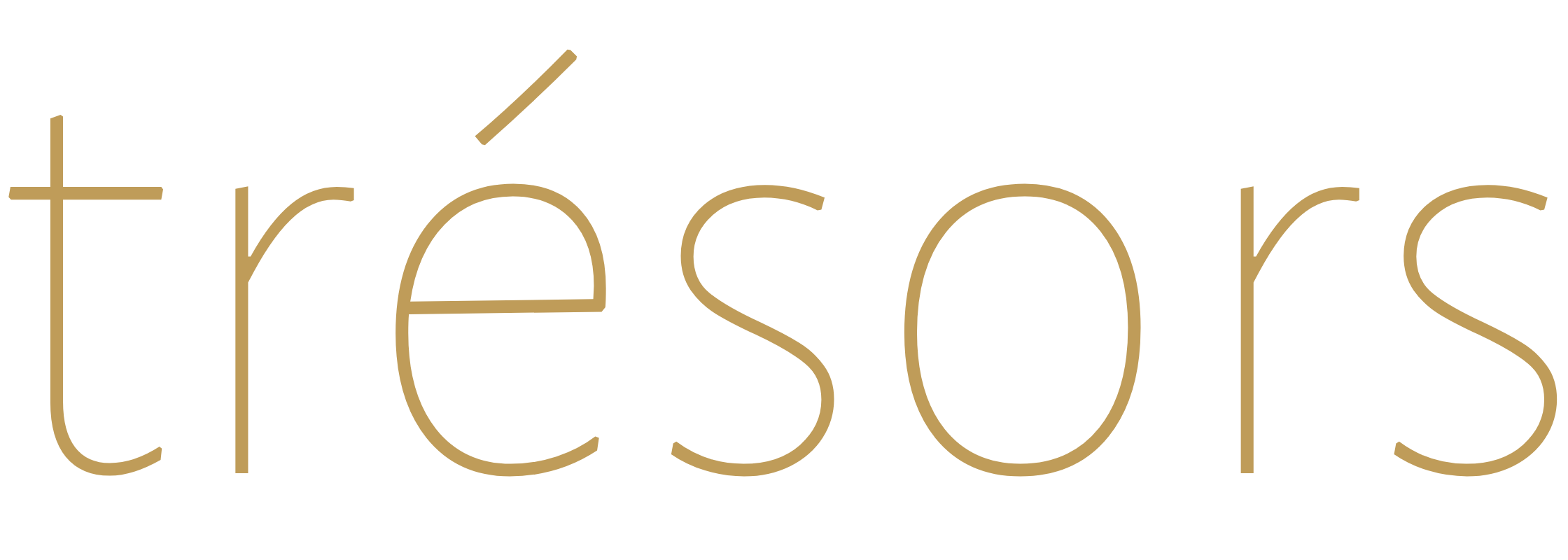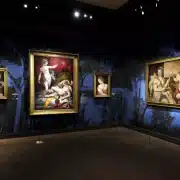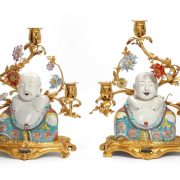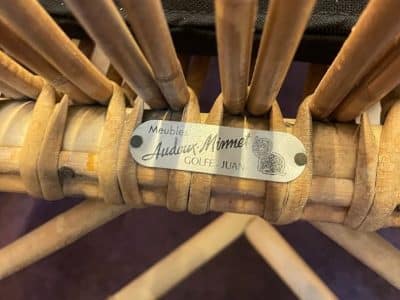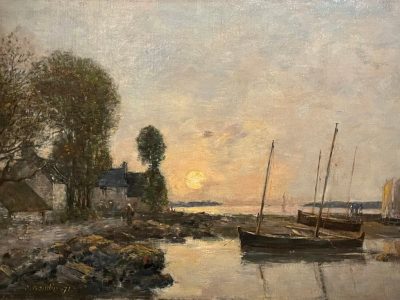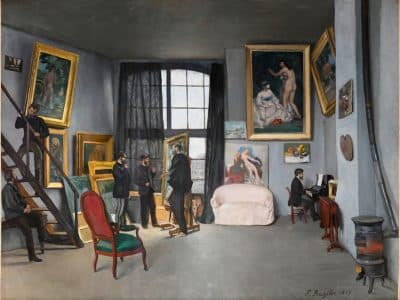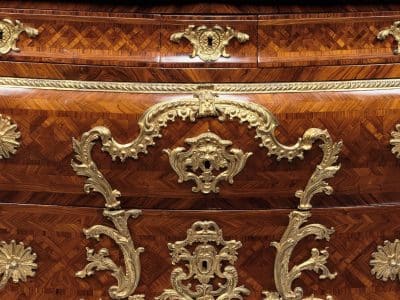Let’s applaud the initiative of the renowned Parisian department store Le Bon Marché to revive its home decor brand, L’Atelier Pomone. The brand has been available to the public again since September 2024.
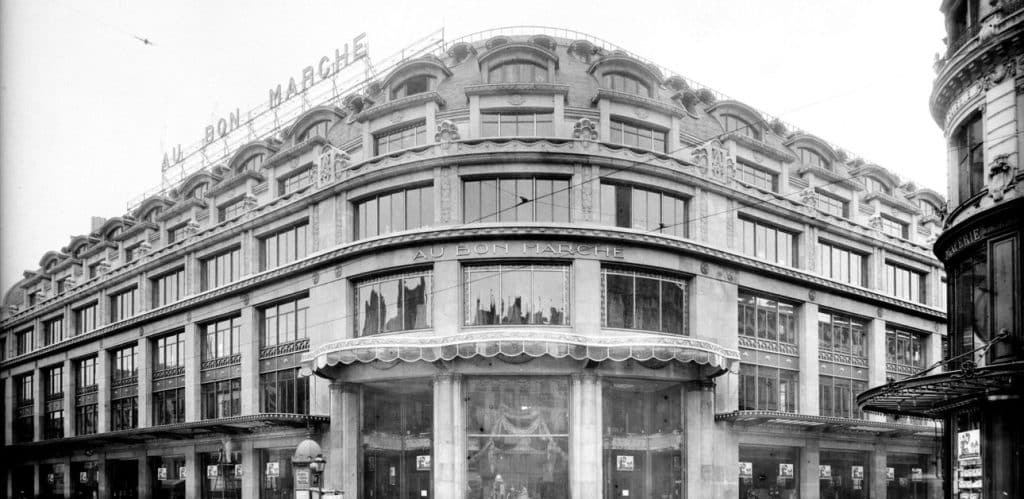
When it first started in 1923, L’Atelier Pomone was on the fourth floor of a brand new Art Deco building architected by Louis-Hippolyte Boileau. Today, the 38 rue de Sèvres hosts the Grande Epicerie de Paris. © Le Bon Marché Rive Gauche
The creation of this art studio in 1923 coincided with two key phenomena: the dawn of a modern era in which consumption and home decoration became accessible to a broader audience, and a time when interior designers focused on the harmony between beauty and utility.
It allows us to revisit the Pomone studio’s creations when it first started under the direction of Paul Follot (1877-1942). Follot was a leading designer and decorator of his time, a pioneer of Art Deco borrowing from Art Nouveau, the French tradition of the 18th-century marchands-merciers, and cabinetmaking of the Faubourg Saint-Antoine.
L’Atelier Pomone, a Modern Art Studio
When it was first created, L’Atelier Pomone was the product of a more general trend among department stores. As early as 1912, the Printemps initiated it with the Primavera studio. What were these studios about?
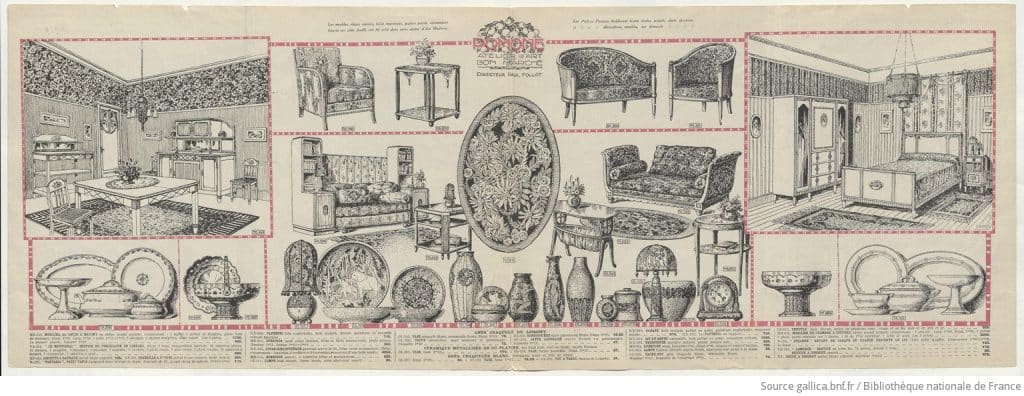
A page of the 1923 catalog for Pomone showing various furniture sets (kitchen, bedroom, living room) with decorative objects. Gallica.bnf.fr / Bibliothèque de France
At the top of the 1923 catalog of Pomone, you can read:
The furniture, chairs, silks, printed fabrics, wallpapers, and ceramics featured on this sheet were created in our Modern Art workshop. The Atelier Pomone handles all designs, projects, special estimates, decorations, and custom-made furniture upon request.
Society had evolved towards a larger middle class who ambitioned to make their homes practical, comfortable, and beautiful. New types of spaces needed to be designed for more people to adjust to “modern life”. With industrialization, items could be produced in larger quantities, but quality and aesthetics suffered.
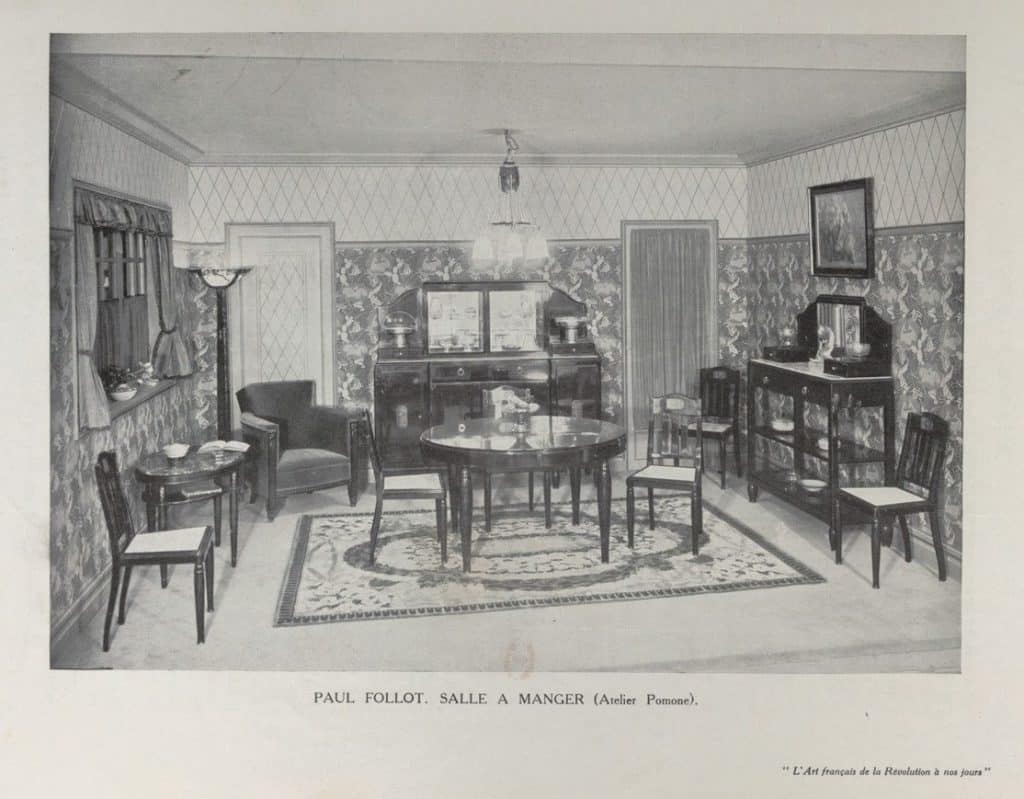
Dining room by Paul Follot for L’Atelier Pomone, circa 1922-1925. In “Histoire générale de l’art français de la Révolution à nos jours. Tome III L’art décoratif par Gabriel Mourey“. Gallica.bnf.fr / Bibliothèque de France
These studios were meant to find the right balance for their clientele between craftsmanship and mass production. Providing quality and beauty at a reasonable price was their promise. They showcased rooms with themed decors (called ensembles meaning “together” or “set” in French to convey the idea that “the things in this room go well together”) and they sold the included items (decorative objects, lighting, home textiles, tableware, and furniture). That is why these decorators were called ensembliers.
Some of the items presented were made by manufacturers selected for their artistic and qualitative approach, Saint-Louis, Longwy, and Keramis among others. They created and produced some limited series specifically for Pomone.
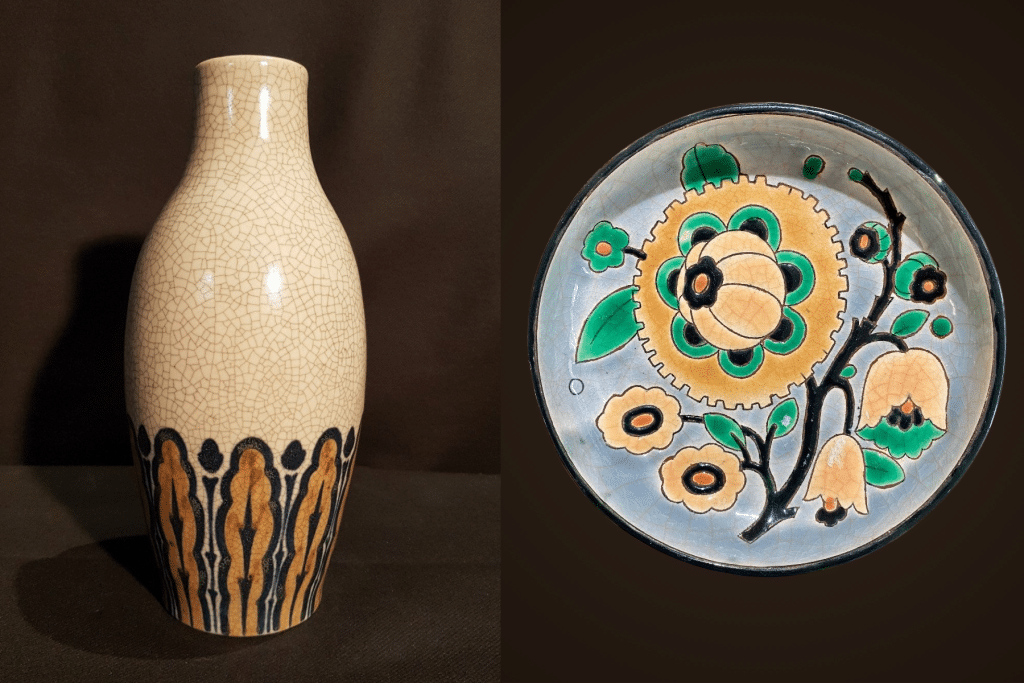
Art Deco ceramics with crackle glaze: a vase by Keramis (© Au Fil du Temps Belgium) and a bowl by Longwy (© B R Antiquités) for L’Atelier Pomone. Can you spot this vase on the 1923 catalog page above?
Paul Follot, a Designer Who Pioneered Art Deco
When in 1923 Paul Follot took the leadership of L’Atelier Pomone, he had been in the decorating business for over twenty years. We can describe Follot as a trailblazer of Art Deco—although that is also an oversimplification.
Certainly, in various proportions, he stylized motifs (flowers in garlands and bouquets in particular), used sumptuous materials (yes, but not only), and designed ocean liner interiors (e.g. SS Normandie in 1935). However, he didn’t develop a radical Art Deco style in opposition to past trends; he integrated his long experience and preferences.
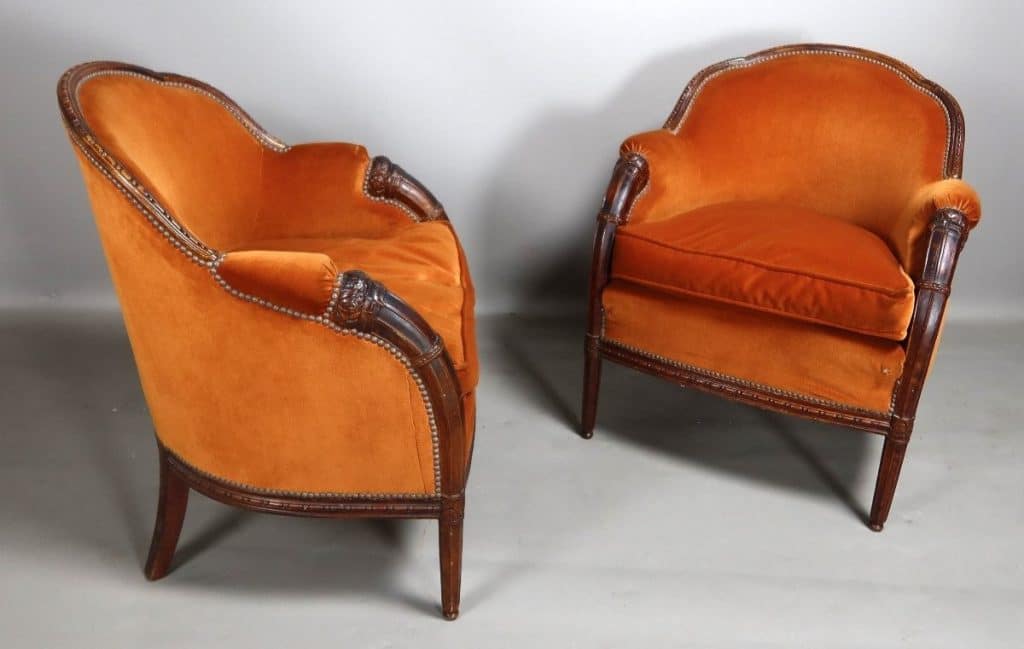
Art Deco armchairs in mahogany by Paul Follot. Note the cornucopia for the armrests. There is a similar model at the Musée d’Orsay. © Philippe Cote Antiquités
As a worthy student of Eugène Grasset, he began by successfully creating in an Art Nouveau style, where nature is the primary source of inspiration. Wood is a material he was particularly fond of. He also had a talent for giving a luxurious touch to modest materials.
He designed and decorated his home and art studio at 5 rue Victor-Schoelcher in Paris, which was inaugurated in 1914. Even from the facade, you can see the early signs of Art Deco emerging within his Art Nouveau style, influenced more by the Austrian Secession than the French Nancy school.
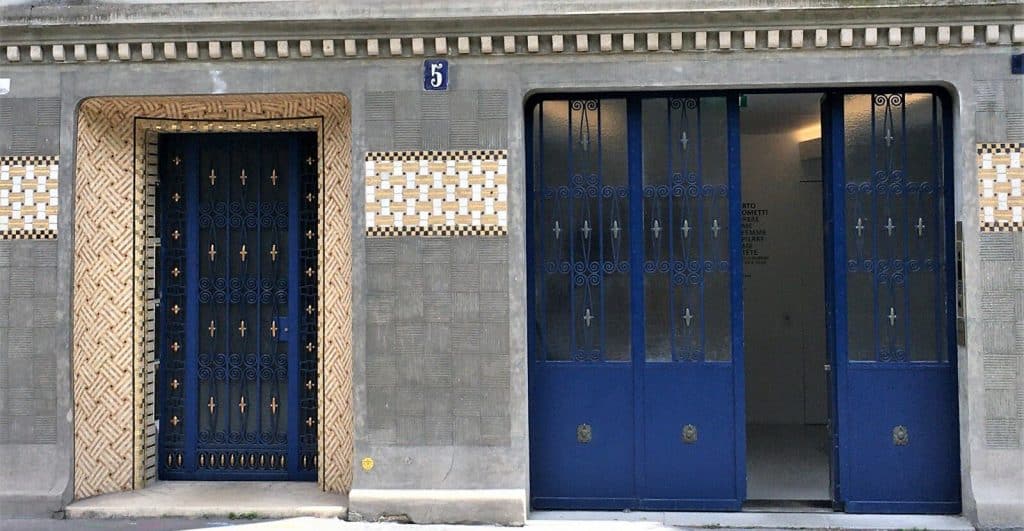
From Art Nouveau to Art Deco: Facade of 5 rue Victor Schœlcher, house of Paul Follot, now hosting the Fondation Giacometti. © Blog de Michel
Despite his modern approach, Follot leveraged the old French cabinetmaking tradition in several ways. He was not afraid of injecting some sculpted elements with clear references to the Louis XVI or Empire styles. He also had furniture made by woodworkers of the Faubourg Saint-Antoine in Paris. This district known for its expertise in wood and craftmanship since the 17th century was criticized during the Art Nouveau period for its lack of quality and inventiveness, but Follot knew who to work with and how to harmonize his varied inspirations.
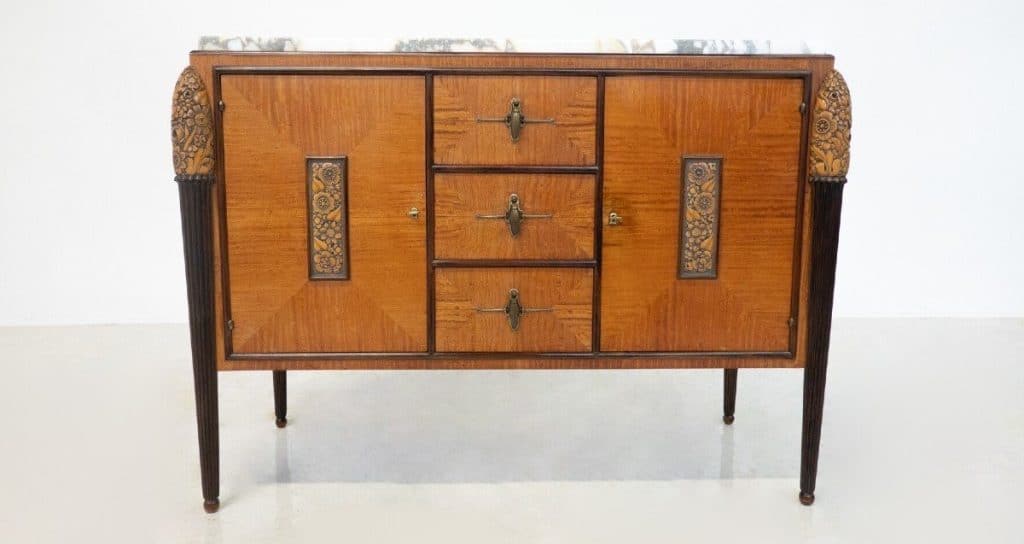
An Art Deco chest of drawers by Paul Follot. In lemon tree and walnut wood. Circa 1920. © Galerie des Minimes
At the Exposition Internationale des Arts Décoratifs in 1925
While Paul Follot was leading the Pomone art studio, a defining event for Art Deco took place in Paris in 1925: the International Exhibition of Modern Decorative and Industrial Arts. This fair, initiated by designers as a reaction against Art Nouveau, was long overdue as the First World War postponed it.
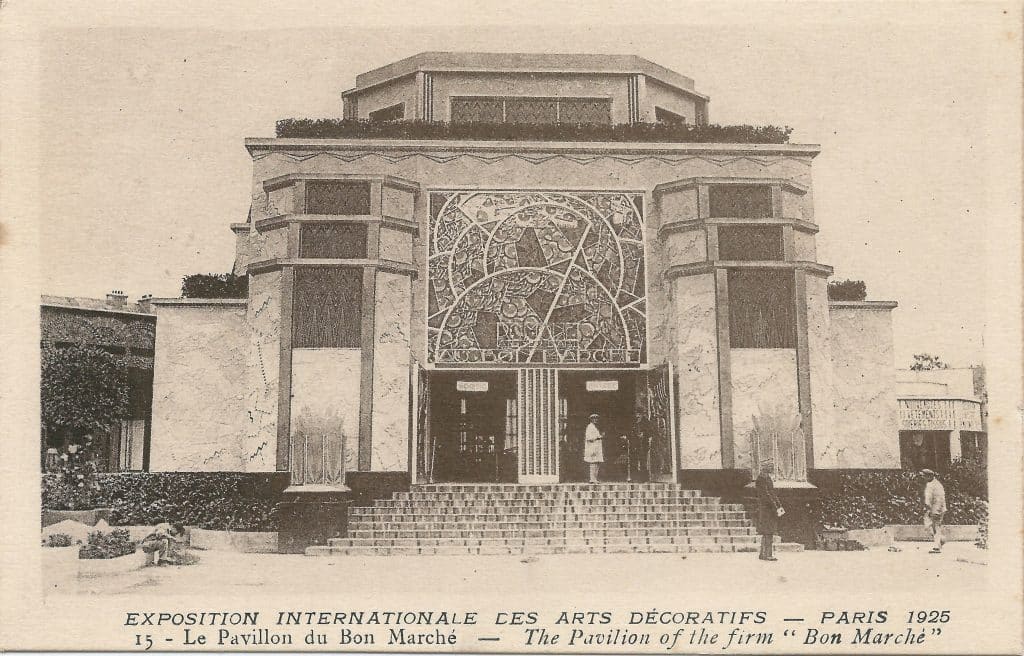
The pavilion of Au Bon Marché and Pomone at the 1925 International Decorative Arts Exhibition in Paris. Do you remember the building pictured at the beginning of this article, where L’Atelier Pomone sits? They were both designed by the same architect, Louis-Hippolyte Boileau. Creative Commons
It was an astounding showcase of international magnitude as 21 countries participated in it. It widely contributed to the expansion of what was later called Art Deco (its name originating from the 1925 exhibition and being short for arts décoratifs). Most relevant to our article on the Pomone studio, each main French department store had a pavilion where their art studio was leading the show. It sure was a shining moment for the Bon Marché and Paul Follot.
At the time, the weekly magazine L’Illustration concluded their article about the Pomone pavilion in this manner:
The name and brand “Pomone” will soon be known worldwide because the Bon Marché pavilion at the Exhibition of Decorative Arts will have shown visitors from all corners of the globe what the art of furniture should and can be when restored to its true purpose. Bold, no doubt, yet still respectful of the most time-honored traditions, its powerful originality is always in good taste and full of common sense: it is truly a French art.
####
In 1928, three years after the exhibition, Paul Follot left L’Atelier Pomone to manage Waring & Gillow in Paris. The Pomone art studio progressively evolved from Art Deco to Modernism under René Prou (until 1932) and Albert Guénot (from 1932 to 1955).
####
You May Like
Paul Follot | Art Deco | Longwy Enameled Ceramics | Keramis Ceramics | Saint-Louis Crystal Glass | Art Deco Furniture

